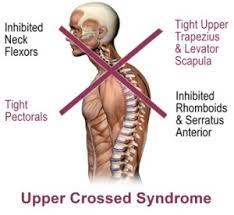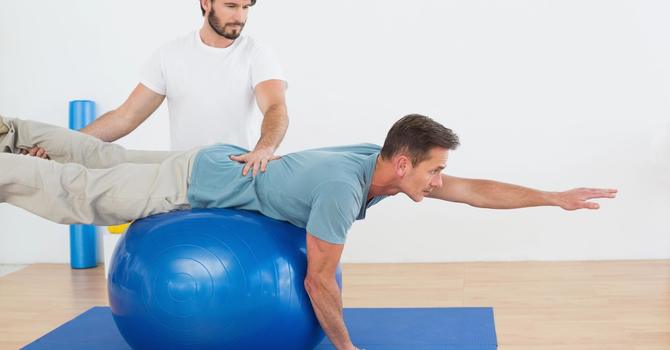We hear it all the time. “Sit up straight!” “Pull your shoulders back!” “Don’t slouch so much!” The list goes on.
Society tells us it’s important to have good posture. But what does that truly mean?
Question: “If I fix my posture, will my pain go away?”
Proper posture is commonly associated with good health. That being said, staying in any static position for an extended period of time can cause pain. So while sitting in an upright position with a neutral spine can help with back pain, the key is going to be variability: Keep Moving and Improve Function!
My goal is to give you as much information as possible, and guide you to make an education decision for your needs when it comes to alleviating pain. For many, this may begin with finding posture and a position that feels good. However, nothing will feel right unless you start addressing the higher level issues – lifestyle and movement. People who live a rather sedentary life can have a harder time reaching ideal posture, as well as be at risk for other comorbidities like cardiovascular disease, obesity, and depression. In simpler terms, motion is lotion and the more you move throughout the day, the better you will feel!

What Is Posture?
Posture is defined as the position in which we hold our bodies for a specific amount of time. Specifically, “ideal” posture is defined as sitting up straight with your neck and spine in a neutral position, shoulders back, and feet supported.
What Happens If I Don’t Fix My Posture?
It’s no secret adopting poor posture as a habit can lead to unresolved problems, such as low back or neck pain. However, staying in any position for a long period of time can cause all sorts of pain. For example, I know that if I sit for long periods of time (with “good” posture!), my hip flexors start to bother me.
Poor posture can be caused by something called “upper cross syndrome.” Upper cross is defined as an alternating pattern of tight and inhibited neck and shoulder muscles. People most susceptible to this are often desk workers that are “flexor-dominated (1).” However, what many don’t realize is a sedentary lifestyle is the other biggest contributing factor to upper cross syndrome (2). So what’s the biggest takeaway here? Addressing a sedentary lifestyle will in turn help fix your posture!

How Can I Fix My Workspace?
So, how can you adjust your own workspace to promote good posture? With a little thing called ergonomics. Ergonomics is defined as the science of designing and arranging things for efficient use. An example of poor ergonomics is having your computer screen too high up, or your computer mouse being too high to reach. In this situation, your body will overcompensate and in turn force bad habits. Improving your ergonomic situation at your workstation will certainly help, but it’s only one piece of the puzzle. Below is an example of good ergonomics for a workstation.
The rule of 90’s (90 degrees elbows, hips, knees)
- If you are looking at your laptop, sit back in your chair and sit up tall
- Push Shoulders Back & Elbows at 90 degrees will allow your neck to remain neutral
- Keep Hips, Knees, and ankles at 90 degrees

Watch this video below for more on the rule of 90’s!
Is It Too Late To Correct My Posture!
Patients tell me all the time sitting at their desk causes back pain. I’d normally ask them to show me how they sit, and it’s usually a combination of a slouch with rounded shoulders. There are a few things we can do, but the most beneficial to our patients is teaching and building on healthy habits. For example, I often suggest a lumbar support roll to allow their low back to fall in a more neutral position and help them make adjustments to their workstation (see video above!).
Can Bad Posture Cause Pain?

It’s a common misconception that poor posture causes pain. The research is very limited in supporting this claim. That being said, there are many things that you can assess and do have a direct correlation with pain such as exercise, your job satisfaction, stress levels, and other lifestyle factors.
Here are three reasons posture does not have a direct correlation to pain:
- Your body tissue adapts to stress over time. A theory behind bad posture is that it likely leads to microdamage to that tissue overtime. However, think about lifting weights. Over time, that stress you place on your muscles and joints allows you to deal with the stress and strengthen those muscles.
- Tissue damage does not always mean pain. Pain is multifactorial, but the likelihood of tissue damage from bad posture is slim. Multifactorial means that pain consists of factors such as mechanical, stress, and poor lifestyle (being sedentary, or smoking).
- We are naturally asymmetrical! The idea that one “perfect” position will fit everyone is illogical. What works for someone who is six foot two most likely won’t be comfortable for someone who is five foot three. Our size and shape will inherently dictate the best way to sit and stand comfortably.
So… If I Fix My Posture, Will My Pain Go Away?
As I said before, research doesn’t show that poor posture leads to pain, but it certainly can be a contributing factor and is still extremely important to address! By doing so, you can start an educational conversation around building healthy habits that will lead to behavioral change, laying the foundation down to taking charge of your own health.
Want to begin the conversation now to fixing your posture AND becoming pain free? Click below to schedule a free consultation with one of the Strive2Move doctors!




